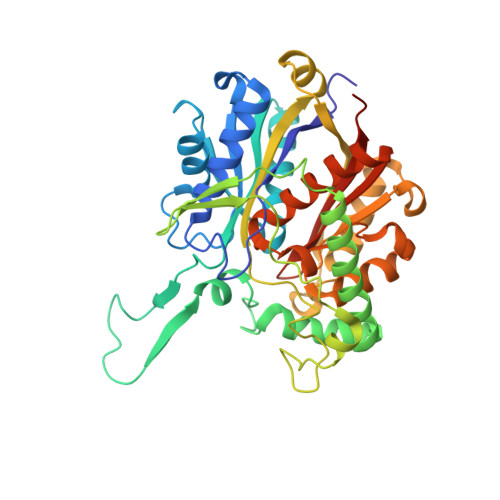Integrated omics approach to unveil antifungal bacterial polyynes as acetyl-CoA acetyltransferase inhibitors.
Lin, C.C., Hoo, S.Y., Ma, L.T., Lin, C., Huang, K.F., Ho, Y.N., Sun, C.H., Lee, H.J., Chen, P.Y., Shu, L.J., Wang, B.W., Hsu, W.C., Ko, T.P., Yang, Y.L.(2022) Commun Biol 5: 454-454
- PubMed: 35551233
- DOI: https://doi.org/10.1038/s42003-022-03409-6
- Primary Citation of Related Structures:
7EI3, 7EI4, 7FEA - PubMed Abstract:
Bacterial polyynes are highly active natural products with a broad spectrum of antimicrobial activities. However, their detailed mechanism of action remains unclear. By integrating comparative genomics, transcriptomics, functional genetics, and metabolomics analysis, we identified a unique polyyne resistance gene, masL (encoding acetyl-CoA acetyltransferase), in the biosynthesis gene cluster of antifungal polyynes (massilin A 1, massilin B 2, collimonin C 3, and collimonin D 4) of Massilia sp. YMA4. Crystallographic analysis indicated that bacterial polyynes serve as covalent inhibitors of acetyl-CoA acetyltransferase. Moreover, we confirmed that the bacterial polyynes disrupted cell membrane integrity and inhibited the cell viability of Candida albicans by targeting ERG10, the homolog of MasL. Thus, this study demonstrated that acetyl-CoA acetyltransferase is a potential target for developing antifungal agents.
- Agricultural Biotechnology Research Center, Academia Sinica, Nankang Dist., Taipei, 115, Taiwan.
Organizational Affiliation:

















